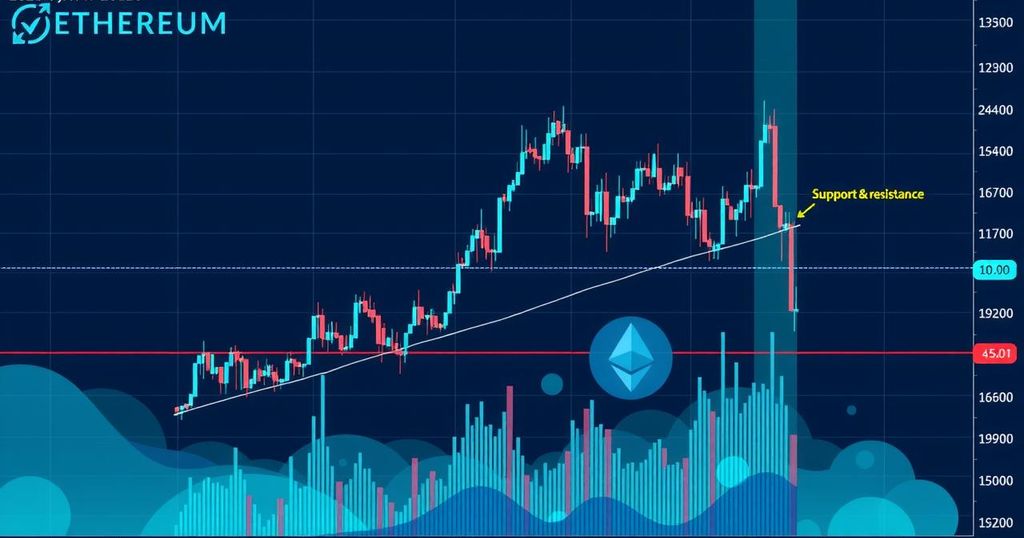Ethereum (ETH) Price Forecast: Will It Break to $2,000 or Decline Further?
Ethereum (ETH) is currently trading around $1,580-$1,600, down nearly 50% over the past year. The Dencun upgrade has adversely affected its value accrual, with ETH losing ground to Solana and BNB Chain. Technical analysis shows mixed signals, with key support at $1,450-$1,550 and resistance at $1,670. Analysts are split on the potential for a breakout to $2,000 amidst rising exchange reserves potentially indicating selling pressure.
Ethereum (ETH) is currently trading between $1,580 and $1,600, reflecting a 1% decrease and nearly a 50% dip over the last year. This decline is compounded by challenges in its data availability roadmap post-Dencun upgrade, leading to decreased value capture. Additionally, Ethereum is losing market share to competitors like Solana and the BNB Chain due to lower fees.
The recent price movements highlight Ethereum’s struggles. Having faced rejection at the $1,688 resistance level, $57.08 million in futures liquidations occurred within 24 hours, indicating increased market volatility. Despite Bitcoin’s bullish trends, Ethereum’s performance continues to drift, raising concerns over investor confidence.
The Dencun upgrade, implemented in March 2024, aimed to enhance scalability, achieving a 16-fold improvement. However, this overhaul reduced the fees captured by Layer 1 (L1) as Layer 2 (L2) solutions gained efficiency in processing transactions at significantly lower costs. Critics point out that this situation undermines ETH’s narrative of being “ultrasound money,” primarily reliant on gas fees.
Proposals have surfaced within the community to adjust the blob fee market to maintain a balance between increasing blob count and fee viability. However, alternatives like Celestia and EigenLayer are offering superior fees and throughput, posing a competitive threat. Despite this, Ethereum upholds its security edge with over 1 million nodes, significantly outnumbering its competitors.
Based rollups are being highlighted as a possible remedy for Ethereum’s scalability challenges. These tools leverage Layer 1 sequencing and have demonstrated effective fee contributions. Notably, the Taiko rollup outperformed the combined contributions of the top three L2 solutions while minimizing data contributions to Layer 1. Nevertheless, based rollups are not prioritised in forthcoming upgrades, potentially delaying resolution of value accrual issues.
Technical indicators for Ethereum present conflicting signals. The Relative Strength Index (RSI) is testing its moving average line, suggesting indecision, while the MACD shows diminishing momentum. A critical support range exists between $1,450 and $1,550, where historical buying pressure has emerged.
Some analysts express optimism regarding a rebound towards $2,000, contingent on Ethereum closing above $1,670. The formation of an ascending triangle pattern also indicates building buying pressure, raising hopes for price recovery. However, increased inflows into exchanges evoke bearish sentiment.
Traders are advised to monitor the support at $1,450-$1,550 and resistance at $1,670. A clear breach of these levels will likely dictate Ethereum’s price trajectory in the near future.




Post Comment